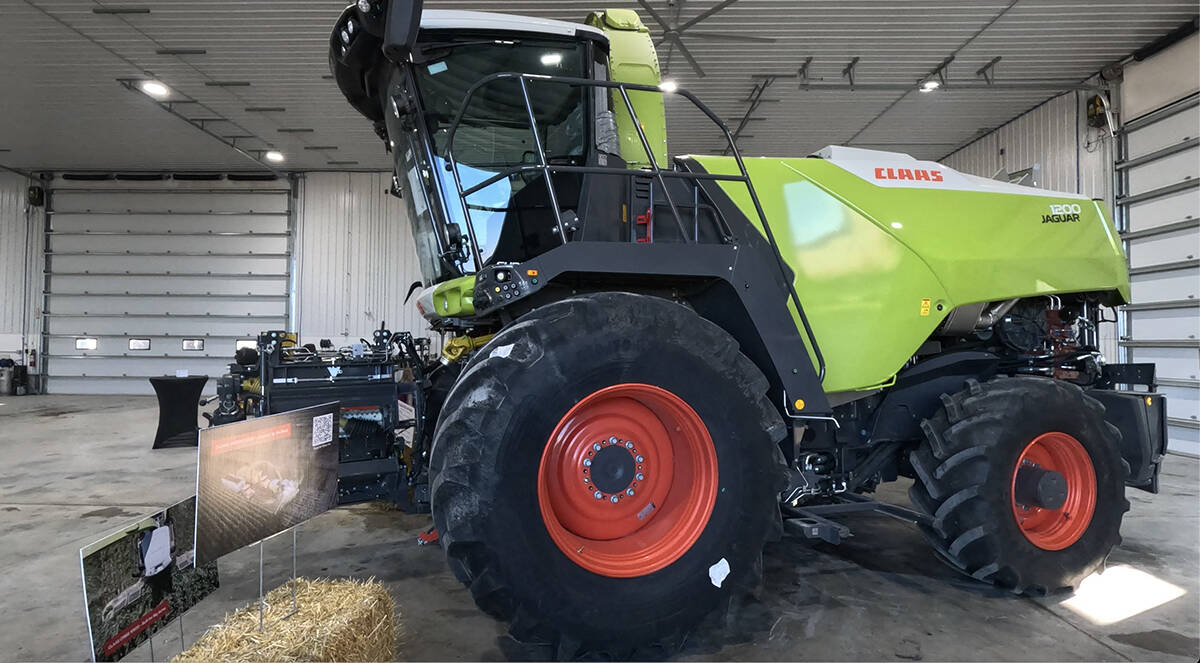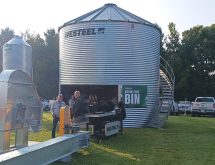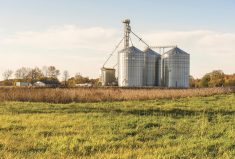Their first fall harvest as farm owners was hard on the Doelmans. They almost had to leave crops in the field because they couldn’t get their corn and soybeans to market.
Lack of grain drying and storage in their area led Michael and Jennifer Doelman of Bonnechere Haven Farms to realize it limited their ability to market and deliver crops, exposing them to unnecessary risk.
Why it matters: The ability to dry grain on-farm can provide more marketing opportunities for farmers.
Read Also

Claas brings 1000 Series SP forage harvesters to Canada
In mid-August, Claas unveiled its new line of Jaguar forage harvesters at an event in Visalia, California, deep in the heart of that state’s dairy region.
It also took a toll on their mental health.
“With only two grain elevators in the county, we are severely under-serviced for grain drying and storage,” says Michael. They also have limited trucking availability, which increased costs and limited their harvest window because they had to wait for trucks.
They set up their own on-farm receiving, drying and storage system last year and it’s been a game changer.
Building sustainability
The Doelmans broke ground in June 2023, building a Neco mixed flow screenless dryer with a Walinga pneumatic system, a 600-tonne Westeel grain bin with continuous flow and a 120-tonne hopper. The facility was ready to dry the family’s corn by Nov. 15.
It wasn’t long before they realized their initial storage bin wasn’t sufficient, and in early summer 2024, they doubled their on-farm storage by building another 600-tonne grain bin.
The Doelmans farm 1,200 acres, growing canola, corn, forages, soybeans and wheat. They also provide custom planting, no-till drilling and spraying to neighbours.
Michael works on the farm full-time, with the help of one employee. Jennifer farms while also teaching at Algonquin College. They are also raising their two children, AJ and Becky.
“We no longer have to haul grain in the dark or on weekends,” says Jennifer, noting benefits of the new facility include safer working conditions. She says the dryer and storage bins have also helped spread the workload, allowing them to combine when conditions are right, not when trucks are available to haul the crop.
The ability to work in good conditions also enhances soil management by reducing compaction and unnecessary soil disruption.
“It’s more than just a grain dryer and storage. This new system is building sustainability into our farm operation, into the Ontario marketplace and throughout our food chain,” says Jennifer.
Making it happen
The drying and storage facility wouldn’t have been possible without cost-sharing through the Supply Chain Stability and Adaptability Program funded by the Ontario government. Their local MPP, John Yakabuski, called to tell them their funding application was approved.
“We are so grateful for the funding. I feel like we’ve won the lottery,” says Jennifer.
They worked with a team of trusted, local contractors and suppliers who helped them negotiate supply costs and complete the project on time.
There were many lessons learned along the way. Selecting the drying and storage equipment was easy, but establishing the best layout for the new dryer and storage bins required planning. The couple agree their facility needed more space than expected and are glad they spent time thoroughly planning traffic flow and placement.
They also needed more fill, and now advise any grower considering an on-farm facility to overestimate gravel requirements because “it’s no fun working in mud,” says Jennifer.
Early in the planning process, Michael realized the development wasn’t just a short-term solution, and that he needed to plan for future expansion within the initial layout.
“We’re already making plans for the next five to 15 years,” he says.
The new facility expands their farm capabilities and business today and also accounts for a changing lifestyle. The current set up is meant to increase efficiency and enhance safety by reducing time working in the elements and climbing on bins.
Jennifer says that, while they are both in their 40s, they considered current and future physical health and capabilities in the design. She also says the new system has reduced their stress levels.
New opportunities
The new storage capacity increases market opportunities, as well as off-season premiums, and on-farm drying means the Doelmans aren’t trucking wet crops as far.
“Our canola was being trucked to Quebec to be dried because it was the only facility that would receive wet canola,” says Michael. “Now that we can dry our own, we are already realizing new market opportunities.”
They can now deliver in the off-season and take advantage of futures prices, which will support the farm’s bottom line while minimizing risk.
“This new dryer and storage system is risk management in reality,” says Jennifer. “We can now improve our soil health and sustainability by being selective when we run equipment in our fields during harvest. We no longer have to market our crops off the field and rely on timely trucking to get it there.
“And most of all, we have the benefit of knowing we aren’t as vulnerable to the weather and markets.”











